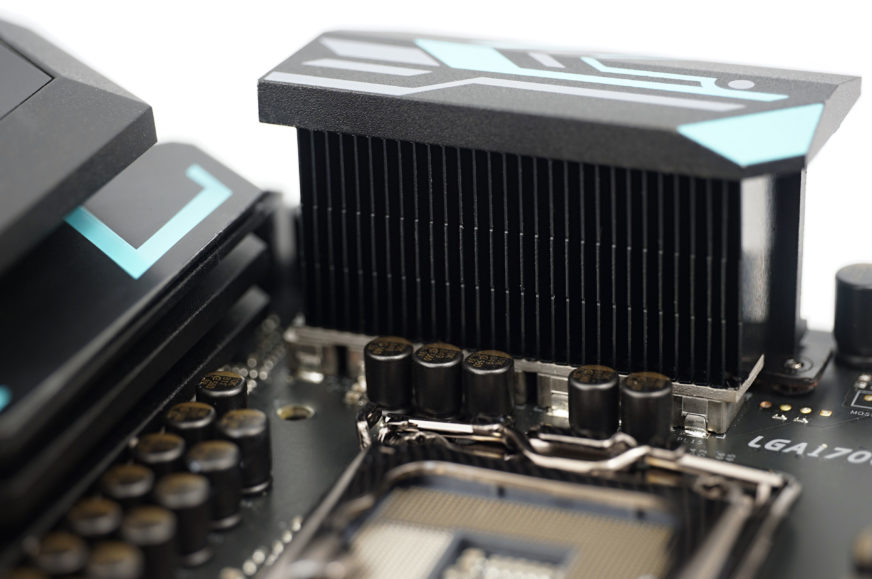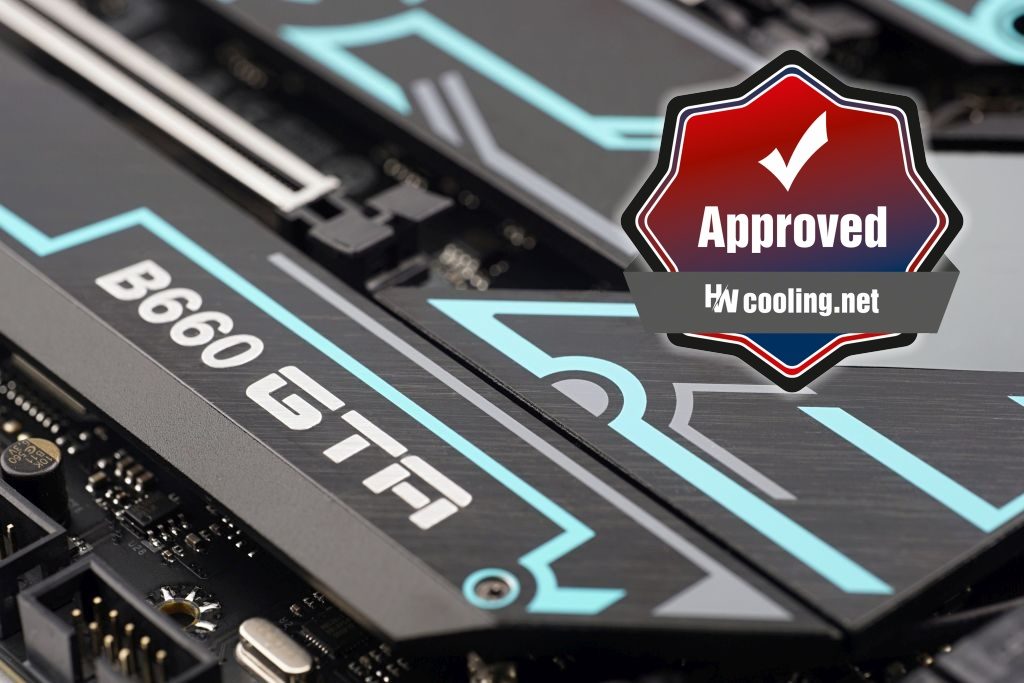Conclusion
Most motherboards from the same classes look pretty much the same. While they differ in color scheme and heatsink shape, the layout, features, and overall operation (including power management) are like a carbon copy. The Biostar B660GTA goes upstream in many ways and presents an attractive option for those users who always find something lacking on boards in this price range.
Conclusion
For whom is the Biostar B660GTA interesting? First and foremost, for users who appreciate a high number of SATA connectors or DVI-D video output and don’t mind only five connectors for connecting fans. There are more of those advantages over some other boards, of course, but whether they’re worth the 50-euro premium over the Asus TUF Gaming B660 Plus WiFi D4 we dare not claim.
Compared to the above mentioned board, the B660GTA’s CPU power delivery efficiency, which is even a few percent lower, is a bit disappointing. Certainly, with more low-power processors, for which this board makes more sense, the differences disappear. Measurements with the Core i9-12900K limited to 125 W/TDP show this. But even under these conditions, the Biostar board doesn’t match the Gigabyte B660 Aorus Master DDR4 for similar money in this regard. Compared to the TUF Gaming B660 Plus WiFi D4, however, it has the advantage of a more even load on the voltage regulators. While the average temperature on them is virtually the same, the hotspots on the B660GTA are some ten degrees Celsius lower at around 290 W. This way, the Biostar board doesn’t get into trouble due to critically high temperatures and is better prepared for the more tropical ambient air.
Remarkably, in a “hard” single-threaded workload, the Biostar B660GTA gets the best results with the Core i9-12900K.Both in Cinebench R20/23 and in Geekbench. But this is no longer the case in web or office environments, which are also single-threaded but typically lower load. For live H.264 playback in Adobe Premiere Pro or encoding audio recordings, the Biostar board is already in the lead. However, this is only with the use of a more powerful processor, with the Core i5-12400, it no longer excels in this way. At least not in terms of single-threaded performance. The B660GTA achieves significantly better results with Core i5 than Core i9 in WinRAR, but also when encoding video (x265) in HandBrake or while gaming in Shadow of the Tomb Raider in Full HD (i.e. at a resolution where CPU performance is more prominent). But these are always relatively small differences and there are never any unnatural fluctuations in performance.
The power and clock speed managements are also worth a more detailed analysis. Of the boards tested so far, this is the only one that achieves lower CPU core clock speeds on average in games than in rendering. This represents a naturally higher load, which also results in significantly higher power draw, and the processor usually ends up at lower clock speeds mainly due to the negative offset of the multiplier for AVX instructions. This is also the case here, but even so, the achieved “gaming” CPU clock speeds are often lower. The idle cores actually crash the multiplier to 8 (800 MHz), which does not normally happen. However, this does not mean lower performance (game and background busy cores go to 4.9 GHz), but neither does it mean lower power draw, which one might expect from this.
The clock speed management is also quite active in single-threaded tasks. These never actually run on a single core (although in one cycle the maximum single-core boost is only achieved on a single core), but multiple cores are used, alternating between them. This is also for the sake of better cooling. This behaviour is common, but the Biostar board works with more cores (usually two) and at a higher speed. The result is that with the highest power draw yet the lowest temperature is achieved. So we can conclude that such an operation on the B660GTA has a positive impact on better cooling, but power efficiency is weaker. These more chaotic jumps in clock speeds and power supply are well illustrated by the jagged power draw curve. And speaking of power draw, it’s always high under heavy load as well as in idle, higher than all boards tested so far (2–3 times compared to the most economical one, depending on the processor used) There is also a higher power draw on the 5 V and 3.3 V branches.This is not addressed by Intel’s power-limit mode such as the B660M Mortar WiFi or the less aggressive CPU Lite Load.
The effective SSD heatsinks are worth praising, but it’s the rarer connectivity options that pull the Biostar B660GTA out of mediocrity in the first place. Visually, turquoise on a black background is also original. And in combination with RGB LEDs… some people don’t need more.
English translation and edit by Jozef Dudáš
| Biostar B660GTA |
| + Robust 14-phase power delivery (VRM)... |
| + ... handles even the Core i9-12900K without power limits with no power loss |
| + Rare features in this class. Up to eight SATA connectors and DVI-D video output |
| + Eventually above-standard single-threaded performance |
| + Bidirectionally fast Ethernet connection |
| + Effective SSD heatsinks |
| + Wide gap between the socket and the first PCIe ×16 slot (convenient graphics card removal) |
| + Up to six fast USB 3.2 gen. 2 connectors... |
| - ... but without USB 3.2 gen. 2×2, which is also found on significantly cheaper B660 boards |
| - Lower power delivery efficiency – higher power draw per unit of performance |
| - Only five fan connectors. Not enough for an ATX board |
| - High idle power draw |
| Approximate retail price: 231 EUR |
Games for testing are from Jama levova
Special thanks to Blackmagic Design (for licenses for DeNoise AI, Gigapixel AI and Sharpen AI) and Topaz Labs (for licenses for DeNoise AI, Gigapixel AI and Sharpen AI)
- Contents
- Biostar B660GTA in detail
- What it looks like in the BIOS
- Methodology: Performance tests
- Methodology: How we measure power draw
- Methodology: Temperature and frequency measurements
- Test setup
- 3DMark
- Borderlands 3
- F1 2020
- Metro Exodus
- Shadow of the Tomb Raider
- Total War Saga: Troy
- PCMark and Geekbench
- Web performance
- 3D rendering: Cinebench, Blender, ...
- Video 1/2: Adobe Premiere Pro
- Video 2/2: DaVinci Resolve Studio
- Graphics effects: Adobe After Effects
- Video encoding
- Audio encoding
- Photos: Adobe Photoshop, Affinity Photo, ...
- (De)compression
- (De)cryption
- Numerical computing
- Simulations
- Memory and cache tests
- M.2 (SSD) slots speed
- USB ports speed
- Ethernet speed
- Power draw curve (EPS + ATX connector) w/o power limits
- Power draw curve (EPS + ATX connector) with Intel’s power limits
- Total power draw (EPS + ATX connector)
- Achieved CPU clock speed
- CPU temperatures
- VRM temperatures – thermovision of Vcore and SOC
- SSD temperatures
- Chipset temperatures (south bridge)
- Conclusion











Super awesome review, very complete